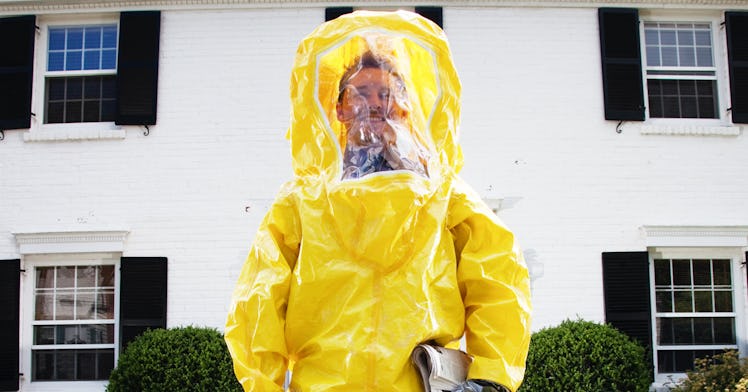How to Keep Viruses Like COVID-19 Out of Your House
Take a cue from hospitals and create household barriers to stop infectious diseases.

As coronavirus, or COVID-19, spreads across the globe, families with young school-aged children are particularly at risk. That’s because children often have poor hygiene habits and spend time in close proximity to each other, making it easy for viruses and bacteria to spread from person to person. Children can then bring viruses like COVID-19 home before they show any signs of illness. This can be dangerous should children come in contact with immune-compromised or elderly members of the family.
One of the best ways to protect the house from any form of the virus is to create a distinct set of barriers that make it harder for the virus to enter the home and spread, according to Dr. Brent Laartz, infectious disease expert and author of Protect Yourself: From Ebola to Zika,
In the best circumstances, the first barrier for a virus is vaccination. But there are no coronavirus vaccinations yet developed. In that case, Laartz says, parents can and should create at-home checkpoints to keep diseases from getting into the house in the first place.
“One of the things I’ve done is to make sure to take their phones and iPads in the car before they even go inside,” says Laartz. This serves a dual purpose. It gives the kids an incentive to get their homework done and also provides him with an opportunity to clean the damn things, which are frequently dirtier (in a bacterial sense) than their shoes.
The Four-Pronged Approach to After-School Hygiene
- Create at-home checkpoints to keep diseases from getting into the house in the first place.
- Ensure that kids get the flu shot, not only because it can mitigate the chance of complications but also to protect their family members.
- Set up a hand-washing station right inside the doorway with antibacterial hand foam or an alcohol-based hand sanitizer.
- When kids come home, make sure they remove shoes and put all items aside that are often touched and travel between home and school.
But those aren’t the only objects kids are touching all day. Grabbing backpacks, folders and lunchboxes are important too. They don’t take much to clean. Store-bought, disposable bleach infused wipes will do the trick.
Once the kids are gadget-free and out of the car, Laartz suggests taking a cue from hospitals: Point them to one entry into the home and set up a handwashing station right inside the doorway with antibacterial hand foam or an alcohol-based hand sanitizer. Here, kids should remove shoes and put all items aside that are often touched and travel between home and school. Not only does this keep viruses from sneaking across the viral DMZ on overlooked objects, it reinforces a household philosophy of cleanliness.
But there are times when a virus might sneak through the defenses. Laartz recommends quarantining the sick individuals to a single area as much as is feasible with kids as well as regular wipe downs of all the shared objects that are commonly touched in the home, including remotes, devices, computers, and game controllers. There should also be extra attention paid to bathrooms. “We don’t think of influenza as being spread by feces but the toilet and sink area could be a potential spot where those viruses can be spread,” says Laartz.
In the end, Laartz encourages parents to be on alert. “Be mindful of all the different ways that bacteria and viruses can enter the house,” he says. “Watch for things that kids are handling a lot.”
This article was originally published on